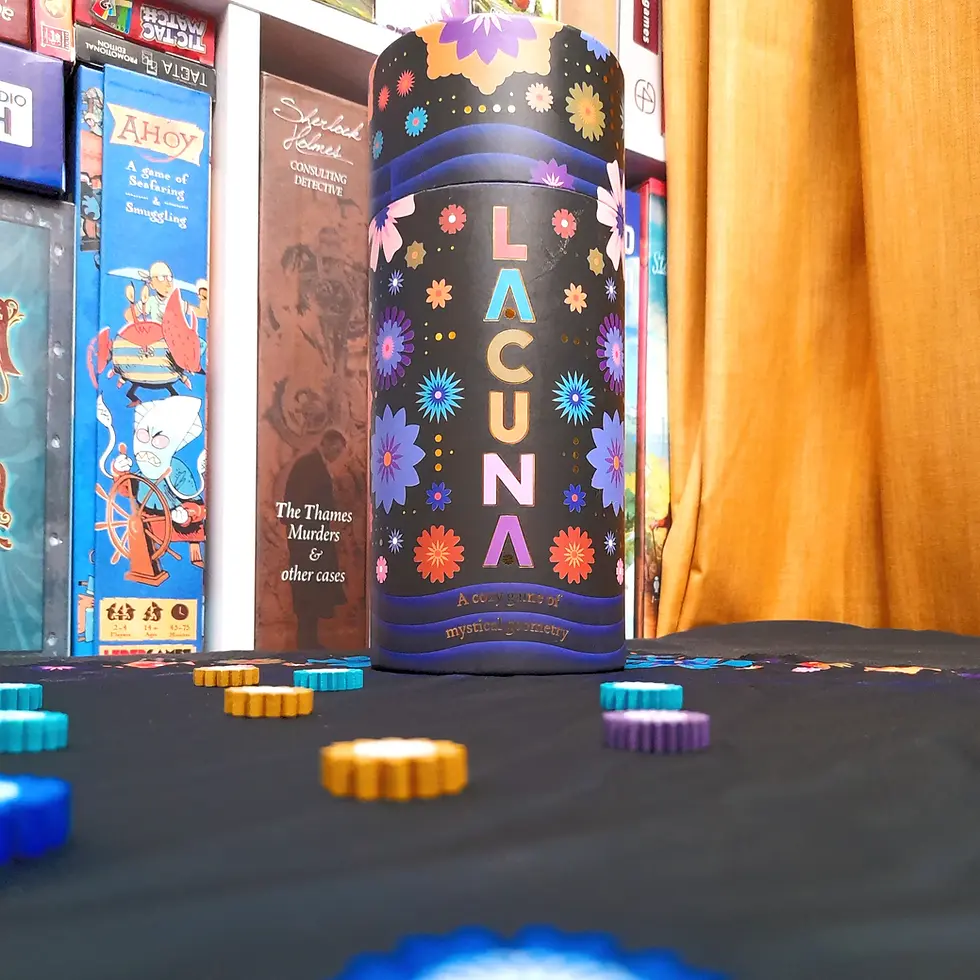Cellulose... It's a plants life
- Emily Critchell

- Mar 22, 2024
- 3 min read
Take a deep dive inside the cell of a plant and help it along it's lifecycle in this scientific worker placement game that'll have you photosynthesising, producing carbohydrates and building cell walls. All of this whilst carefully balancing your resources of proteins, water and hormones.

I was initially drawn to the game due to the brightness of the box and unique theming of the game. I was intrigued by the scientific basis and potential for learning more about plant cells. Most of all though, I was fascinated by the idea that a game had been made that was marketed as both educational and highly enjoyable purely as a game.
First Impressions
As I've just said, the brightness and artwork on the box were the initial draws of this game for me and the blurb on the box enticed me in to give the game a try. The components are of a decent quality with the cards having a nice thickness to them and the tokens well constructed with a mixture between cardboard tokens, resin cubes and wooden player pieces. The boards are a little faffy to lay out and could easily be integrated into one but it allows for flexibility on the gaming space which was rather nice. Again, these are well constructed and felt reasonably sturdy. The rules were mostly well written, although there is a fair amount of information in them and some sections I needed to re-read to properly get my head around them and then get another player to checck my understanding was correct.
Game Play Overview
The game has a variable length based upon how long it takes the players to collectively build the cell wall. However, don't be fooled into thinking this is a cooperative game, as you'll be competing for resources and ultimately the win!

Each round is made up of 3 phases: Sunrise, Daytime and Evening. During sunrise, you'll be collecting your income simultaneously based upon your positions on the plant board and the cell component cards in your play areas. You'll then move onto the Daytime phase where the main actions of the game take place. There are a variety of actions that can be taken from collecting water, CO2, ATP, proteins or hormones to converting these resources into plant growth, carbohydrates and cell components. Players will take it in turns to carry out actions by placing one of their action markers onto an action space and carrying out the ability indicated. Many of the spaces have a limit on the number of players that can use them each round, which restricts the actions available as the turns tick by. Once all players have carried out their actions, you'll move onto the evening phase where the board is reset for the next round, a carbohydrate is added to the cell wall and awards are given for having the most water in the central vacuole. After carrying out the reset, you'll start a new round until the cell wall has been completed. Final scoring then takes place and the player with the highest score is the winner.
Pros and Cons

The game fuses fun and education beautifully in this exciting worker placement game. There's lots going on throughout the game and the rules are a little jumbled for when you want to go back and check something, however, as long as you read them thoroughly to start with, you shouldn't find it too difficult to get your head around. There is also a book included to give you more scientific facts about the elements included in Cellulose. The game does require a fair amount of table space but with the separate plant board this allows for flexibility in the setup layout to fit with your available play area.
Final Verdict
Overall, I was really impressed with the way this game played and the enjoyment I got out of it. Everytime I play it, I feel like I'm learning something new about plant biology without having to go through the tedious process of learning it.
In conclusion, we would rate this game a 8.4/10
.webp)







Comments